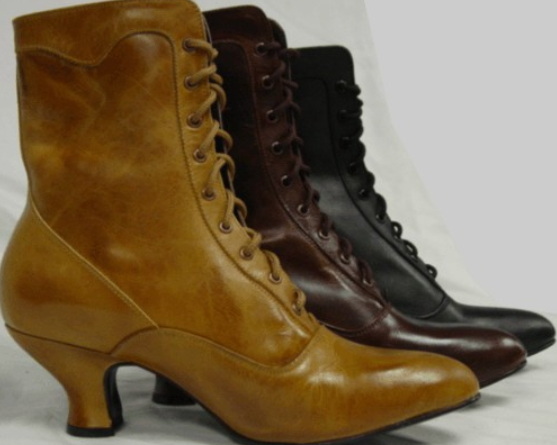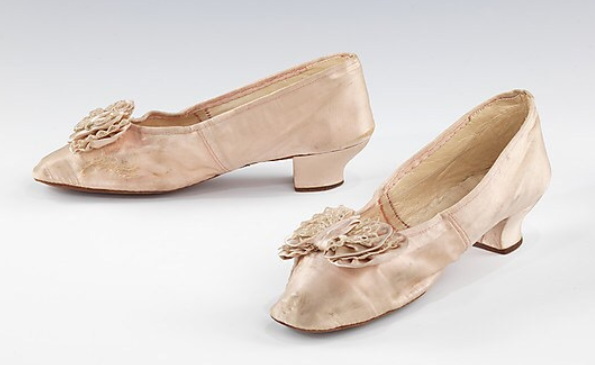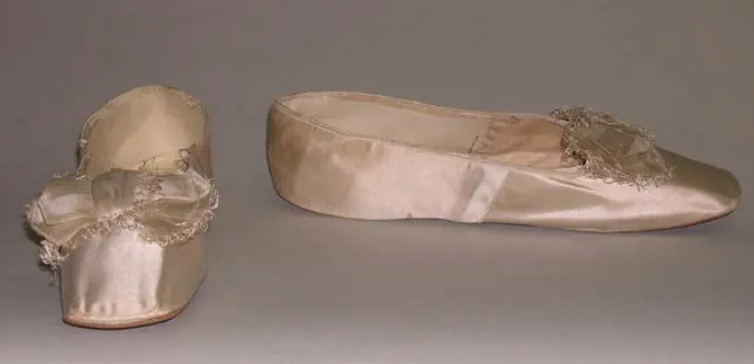Content Menu
● Early 1800s: The Era of Delicate Slippers
● Mid-1800s: The Rise of Boots
● The Return of Heels
● Late Victorian Era: Diversity and Decoration
● Materials and Manufacturing
● Social and Cultural Influences
● Impact of Technology and Transportation
● Conclusion
● FAQ
>> 1. What was the most popular type of women's shoe in the early 1800s?
>> 2. When did heels become popular again in women's shoes during the 19th century?
>> 3. What materials were commonly used in women's shoes during the 1800s?
>> 4. How did the Industrial Revolution affect women's shoe production in the 19th century?
>> 5. What types of specialized footwear emerged for women in the late 19th century?
● Citations:
The 19th century was a transformative period for women's footwear, marked by significant changes in style, materials, and societal influences. From the delicate slippers of the early 1800s to the ornate boots of the late Victorian era, women's shoes evolved to meet the changing needs and fashions of the time. This article will delve into the evolution of women's footwear during the 19th century, exploring the various styles, materials, and cultural factors that shaped shoe fashion.

Early 1800s: The Era of Delicate Slippers
At the dawn of the 19th century, women's shoes were characterized by their simplicity and delicacy. The most popular style was the flat slipper, often made of soft materials such as silk, satin, or fine leather. These slippers were typically flat-soled with no heel, featured pointed toes, and were very narrow[1]. They were fastened with ribbons that crossed over the instep and around the ankle, and were available in white or pastel colors for formal occasions, often embellished with small bows or rosettes at the toe[1].
The flat soles and soft materials of these shoes reflected the Regency era's fascination with classical Greek and Roman aesthetics. However, these delicate slippers were not particularly practical for outdoor wear, leading to the rise of the half-boot for walking and everyday activities.
Mid-1800s: The Rise of Boots
As the century progressed, women's footwear began to evolve to meet the changing needs and fashions of the time. The 1830s and 1840s saw the increasing popularity of boots for women, particularly for outdoor wear. Half-boots, made from materials like prunella (a sturdy wool and silk fabric), became fashionable around 1805 and peaked in popularity by the 1830s[3]. These boots were often made of hardwearing materials such as cordovan leather or cotton, which were preferred for their durability and comfort[4].
Boots provided better protection and support than the earlier flat slippers, making them a practical choice for outdoor activities like walking. The elastic-side boot, patented in 1837, was another popular style that remained fashionable until about 1870[6].
The Return of Heels
One of the most significant changes in women's footwear during the 19th century was the reintroduction of heels. After falling out of fashion in the late 18th century, heels began to make a comeback in the 1850s. Initially, these heels were quite low, typically around 1-2 inches, and were seen as suitable for both walking and formal occasions[6]. By the 1860s, heels became more common, and the shape of the toe evolved from square to more pointed styles.
The reintroduction of heels not only changed the appearance of women's shoes but also affected posture and gait, influencing overall fashion silhouettes. As skirts slimmed from large hoops to bustles, shoes began to play a more important role in fashion, with the toes and sometimes the whole foot becoming visible[5].
Late Victorian Era: Diversity and Decoration
The late Victorian period, from the 1870s to the end of the century, saw an explosion of diversity in women's footwear. Shoes and boots became increasingly ornate and varied in style. Evening shoes featured beading, embroidery, or cut-out designs, while boots were adorned with intricate buttoning or lacing[5]. The Oxford shoe, introduced in the 1870s, became popular for walking and was often made from soft bronze, black, or fawn kid leather[6].
This era also saw the development of more specialized footwear for different occasions and activities, such as sports shoes for tennis and croquet. The rise of lawn tennis, for example, led to the creation of specific oxford-style shoes designed for sportswear[6].

Materials and Manufacturing
Throughout the 19th century, the materials and manufacturing techniques used in women's shoes evolved significantly. Common materials included various types of leather (such as kid and patent leather), fabrics like silk, satin, velvet, and cotton, and later in the century, rubber for soles[2][6]. The introduction of the sewing machine in the 1850s revolutionized shoe production, making it faster and more efficient[2]. Mass production techniques also made shoes more affordable and widely available.
The development of sized lasts improved the fit and comfort of shoes, allowing for more precise manufacturing. This advancement, combined with the use of new materials, contributed to the increased variety and accessibility of women's footwear.
Social and Cultural Influences
The evolution of women's shoes in the 1800s was not just a matter of fashion, but also reflected broader social and cultural changes. The increasing participation of women in outdoor activities and sports, such as walking and horseback riding, drove the demand for more practical footwear[4]. Changing ideas about women's roles and freedoms in society also influenced shoe design, with more women engaging in activities that required sturdy, supportive shoes.
The influence of Queen Victoria and other fashion trendsetters played a significant role in shaping women's footwear. The growth of the middle class and increased consumer culture further expanded the market for women's shoes, making them more accessible to a wider audience[2].
Impact of Technology and Transportation
Advancements in transportation and travel during the 19th century also impacted women's footwear. As rail travel became more common, women needed shoes that were both stylish and practical for traveling. The development of rubber soles, introduced in the late 19th century, provided better traction and durability, making shoes more suitable for urban environments[6].
The Industrial Revolution brought about significant changes in shoe manufacturing, enabling mass production and reducing costs. This made shoes more affordable and accessible to the general population, contributing to the diversification of footwear styles.
Conclusion
The 19th century witnessed a remarkable transformation in women's footwear. From the delicate slippers of the Regency era to the diverse and ornate styles of the late Victorian period, shoes evolved to meet the changing needs, tastes, and social roles of women. This evolution reflected not only changes in fashion but also broader societal shifts, technological advancements, and cultural influences. The legacy of 19th-century shoe design continues to influence modern footwear, making this period a crucial chapter in the history of fashion.

FAQ
1. What was the most popular type of women's shoe in the early 1800s?
The most popular type of women's shoe in the early 1800s was the flat slipper. These shoes were typically made of soft materials like silk or fine leather, had no heel, and often featured ribbons that tied around the ankle. They were delicate and reflected the Regency era's fascination with classical aesthetics.
2. When did heels become popular again in women's shoes during the 19th century?
Heels began to make a comeback in women's shoes around the 1850s. Initially, these heels were quite low, typically around 1-2 inches. By the 1860s, heels became more common, and the shape of the toe evolved from square to more pointed styles.
3. What materials were commonly used in women's shoes during the 1800s?
Common materials used in women's shoes during the 1800s included various types of leather (such as kid and patent leather), fabrics like silk, satin, velvet, and cotton, and later in the century, rubber for soles. The choice of material often depended on the purpose of the shoe, with sturdier materials used for outdoor boots and delicate fabrics for evening wear.
4. How did the Industrial Revolution affect women's shoe production in the 19th century?
The Industrial Revolution had a significant impact on women's shoe production in the 19th century. The introduction of the sewing machine in the 1850s revolutionized shoe manufacturing, making production faster and more efficient. Mass production techniques also made shoes more affordable and widely available. Additionally, the development of sized lasts improved the fit and comfort of shoes.
5. What types of specialized footwear emerged for women in the late 19th century?
In the late 19th century, more specialized types of footwear emerged for women. This included sports shoes for activities like tennis and croquet, Oxford shoes for more casual wear, and a wide variety of ornate evening shoes. The diversity of available styles increased dramatically, reflecting the changing roles and activities of women in society.
Citations:
[1] https://forestidylls.com/2023/07/12/19th-century-shoes-1800-1810/
[2] https://www.shoezone.com/Womens/Shoes/History-Of-Womens-Shoes
[3] https://sites.udel.edu/materialmatters/2019/03/25/stepping-out-a-pair-of-1820s-ladies-half-boots/
[4] https://libertabooks.com/costume/historical-costume-1800-1820-boots-bags/
[5] https://blog.americanduchess.com/2013/01/v347-shoes-of-1860s-1880s.html
[6] https://vintagedancer.com/victorian/victorian-boots-shoes-history/
[7] https://www.wardrobeshop.com/blogs/victorian-era/an-in-depth-look-at-victorian-footwear
[8] https://www.satra.com/bulletin/article.php?id=2043
[9] https://www.americanduchess.com/pages/womens-vintage-historical-shoes-boots-by-era
[10] https://forestidylls.com/2024/04/10/19th-century-shoes-1871-1880/
[11] https://wayne.contentdm.oclc.org/digital/collection/digital-dress/id/4504/
[12] https://www.metmuseum.org/art/collection/search/84592
[13] https://www.pinterest.com/pin/history-of-victorian-boots-shoes-for-women--704391197944632998/
[14] https://www.pinterest.com/ceruleanhmc/1870-1899-womens-shoes/
[15] https://paoloshoes.com/blogs/timeless-craft/a-journey-into-the-history-of-womens-shoes
[16] https://www.neh.gov/humanities/2008/marchapril/feature/teensy-weensy-itty-bitty-shoes

















